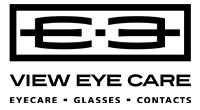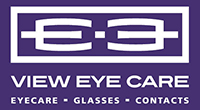The Importance of Clear Vision for Everyday Life
Good vision is essential for nearly every aspect of our lives. From learning new things and performing daily tasks to participating in sports and enjoying hobbies, our eyesight plays a critical role. Hyperopia, or farsightedness, means you can see distant objects clearly, but closer objects appear blurred. In contrast, myopia, or nearsightedness, allows for clear vision up close, while distant objects appear blurry.
Routine eye exams for both children and adults play a key role in catching these conditions early, helping to protect and maintain your vision over time.
How to Tell if You’re Nearsighted or Farsighted
If you’re noticing blurry vision and wondering if it could be hyperopia or myopia, here are a few signs you might observe:
Rest your eyes: Close your eyes for a few minutes or look away from screens. Then, read a few pages in a book. If the words start to blur or you develop a headache, you might be experiencing farsightedness.
Test your distance vision: Try looking at something about 10 feet away. If the words or images aren’t sharp, it could be a sign of nearsightedness.
Remember, these self-checks are not a substitute for professional care. They can provide clues, but only an eye care professional can confirm your diagnosis and recommend treatment options tailored to your needs.
Hyperopia vs. Myopia: What’s the Difference?
Both hyperopia and myopia are classified as refractive errors, meaning they affect how the eye bends or refracts light. This light is ideally focused on the retina, the light-sensitive layer at the back of the eye. When light doesn’t reach the retina properly, it results in blurred or distorted vision.
Hyperopia occurs when the eye is shorter than usual, or the cornea is flatter, causing light to focus behind the retina. This makes it challenging to see objects up close, while distance vision remains clear.
Myopia occurs when the eye is longer than usual, or the cornea is more curved, causing light to focus in front of the retina. As a result, distant objects appear blurry, while nearby objects remain clear.
Factors That Increase the Risk of Myopia
Myopia can affect anyone, but certain factors can increase the likelihood of developing it. For example, having a family history of myopia—especially if one or both parents are nearsighted—can heighten the risk. Spending extended periods focused on close-up activities, like reading or screen time, also contributes to its progression, as does limited time spent outdoors. Hyperopia, however, is different. Often present from birth, farsightedness tends to be less influenced by environmental factors and more connected to the eye’s natural development.
Recognizing the Symptoms of Hyperopia and Myopia
Identifying the symptoms of these conditions can help you take action sooner. Here are some of the common signs associated with hyperopia and myopia:
Symptoms of Hyperopia:
- Blurry vision when looking at nearby objects
- Burning or aching eyes, especially after prolonged close tasks
- Frequent headaches after reading, writing, or screen time
- Eye discomfort and strain
Symptoms of Myopia:
- Persistent squinting or needing to sit closer to screens or objects
- Difficulty seeing distant objects, such as road signs
- Blurred vision in low-light conditions, such as during nighttime driving
- Excessive blinking or eye rubbing
If you’re experiencing any of these symptoms, it’s best to consult with an eye care professional who can perform a thorough eye exam and provide personalized recommendations.
Challenges Associated with Hyperopia and Myopia
Without proper treatment and early detection, both hyperopia and myopia can lead to complications. Here’s what each condition may entail:
- Hyperopia: If left uncorrected, farsightedness can cause eye strain, reduced quality of life, and, in some cases, lead to crossed eyes (strabismus) in children.
- Myopia: Nearsightedness can impact school performance, quality of life, and even safety in activities requiring clear distance vision. It may also increase the risk of other eye conditions, such as retinal detachment, later in life.
Hyperopia Management
Most cases of hyperopia can be corrected with prescription glasses or contact lenses, which adjust the eye’s focusing power for close-up tasks. For those who prefer a more permanent solution, refractive surgery, like LASIK, can reshape the cornea and reduce dependence on corrective lenses.
Myopia Management
While glasses and contact lenses can correct myopia, several options specifically aim to manage and slow its progression in children. These include:
- Myopia control glasses: These lenses not only correct nearsightedness but also signal the eye to slow its growth.
- Multifocal contact lenses: These specialized lenses have multiple focus zones to help manage myopia progression.
- Orthokeratology (Ortho-K): Special lenses worn overnight that temporarily reshape the cornea to improve vision during the day.
- Atropine drops: Low-dose atropine eye drops may slow down eye growth in children, reducing the progression of myopia.
Regular eye exams help track any changes in vision so treatment plans remain effective.
Take Steps to Safeguard Your Vision
Early diagnosis and treatment can preserve your vision and contribute to long-term eye health.
If you’re experiencing symptoms or have questions about your eye health, don’t hesitate to schedule an appointment with View Eye Care. Our team is here to help you find the right solutions to support your vision and quality of life.




